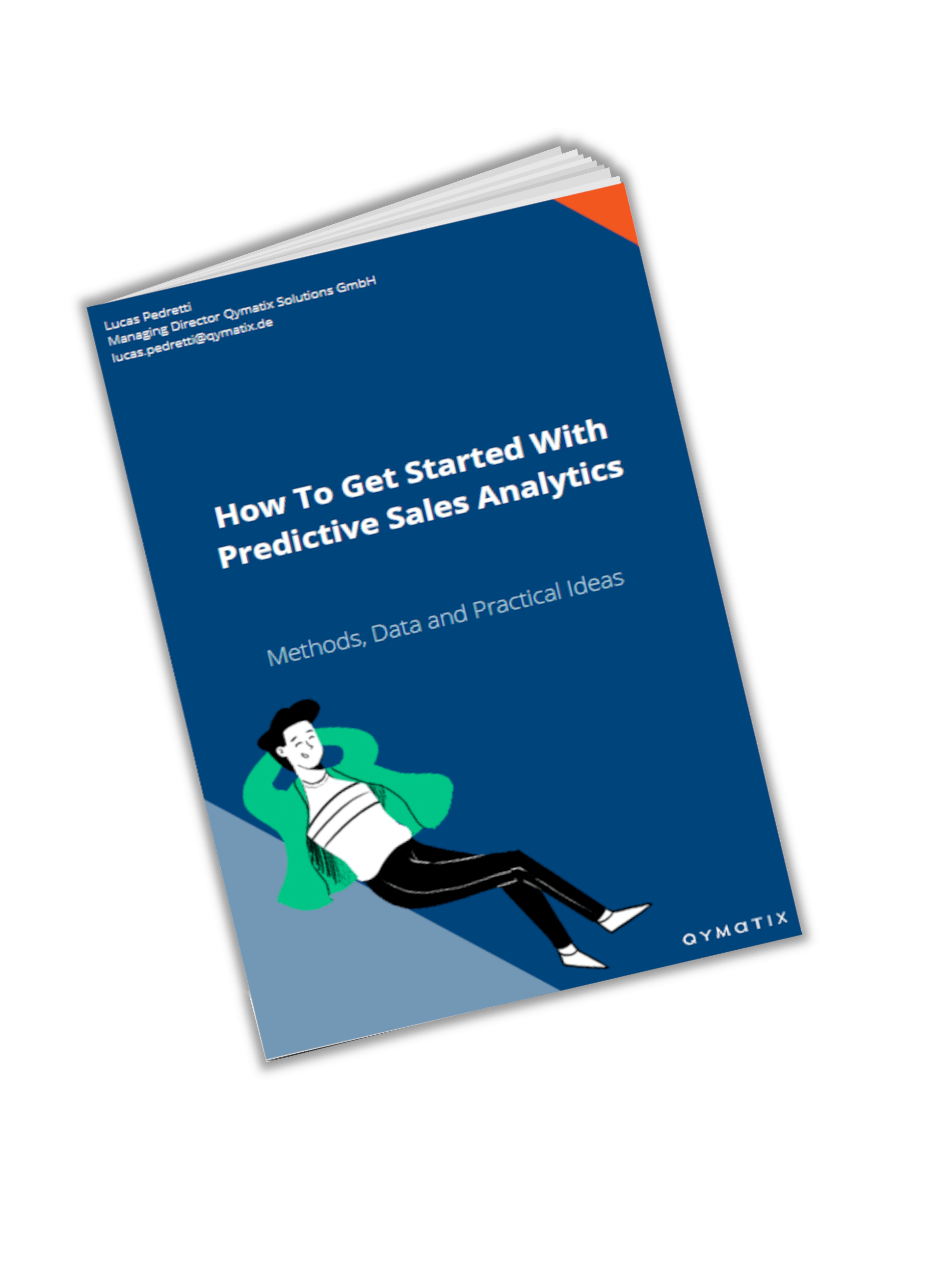How a Poor Lead Scoring Methodology is Hurting your Business.

Please enter your Email address
Classic Pipeline Management & Lead Scoring vs Predictive Analytics
Sales in Business-to-Business is dramatically changing. Personal contacts and relationships are no longer a guarantee for more business. Pure push strategies are losing its shine. Marketing is critical than ever.
The balance of power between buyers and sales representatives has gone all the way back. Buyers are now masters of product search and vendor selection. Competition? Ubiquitous.
This new buying reality makes lead-scoring and pipeline management extremely relevant in B2B sales. Here we discuss the importance and present some ideas and data mining methods to analyse leads.
You should have a formal pipeline management process.
No successful sales leader is any form surprised by this statement. There are two precious resources in B2B: the time of your key account managers and the cost of acquiring any new business. Therefore, to make the most of both, your sales team MUST have a formal pipeline management process and sales operations covering the acquisition of new business.
Managing a sales pipeline is a critical operative sales planning job. To successfully perform this job, sales leader needs a formal process. This process should at least include monthly review meetings, where the sales management discusses an overview of the funnel or pipeline. In addition, the sales team should assess each sales plan or opportunity in detail and measures the pre-defined pipeline KPI.
In most complex sales operations, this sales planning is part of a Sales and Operations Planning (S&OP) Process. The S&OP is possibly the most critical planning process of any company. Its primary goal is to bring together three crucial but competing goals into line: customer satisfaction, inventory optimisation and sales productivity.
If your company or your sales team do not have a formal sales planning process yet, you can start by establishing one now. Meet with your key account managers and discuss this option as soon as possible.
Not all sales leads are born equal.
This should be fact. It is an undeniable truth that all B2B companies have limited sales and marketing resources. The most significant expense of selling organisations is the cost of their sales operations. Companies should always be on the lookout for methods that can potentially enhance the productivity of their sales forces.
In many sales operations, the marketing department is responsible for feeding the sales team with leads. The marketing department or the sales department usually qualify these incoming sales leads. Qualifying sales leads means grading or scoring them based on the probability that they represent a valuable sales opportunity indeed.
More on leads scoring in the next section. It is essential to agree now, that not all sales opportunities will have the same chances or likelihood of closing in a given period. The different probability of closing combined with the limited sales resources brings us to a crucial point of this section: prioritisation.
Businesses should invest expensive sales resources in areas where the ‘marginal’ returns are the highest. These areas where marginal returns are the highest are those with the highest likelihood of closing and with a significant financial impact.
CALCULATE NOW THE ROI OF QYMATIX PREDICTIVE SALES SOFTWARE
Classic or traditional lead scoring vs predictive analytics.
For example, suppose a sales organisation uses different lead scoring models. We know this not to be more an aspiration than a fact. Allow us to make some assumptions on how this “classic lead scoring” might look.
There are two types of traditional lead methodologies in B2B companies, a) “human-rated likelihood” and b) “rule addition based”. Both are equally poor, for both increase sales costs without providing much value.
A “human-rated likelihood” lead-scoring model uses each key account manager own judgement on the probability of a deal closing. In simple words, each sales rep judges “how likely” it is, that your company can win a project. This model is extremely inaccurate, for everyone estimates probability differently. It introduces 101 answers or “classes” (from 0% to 100%). Furthermore, Key Account Managers usually hate this additional work and think it is unusable, unnecessary and only brings them in the fire-line without offering them any benefit. If you are using this method, stop immediately.
You should have a formal pipeline management process based on predictive analytics.
A “rule addition based” uses pre-defined points for each sales opportunity, until this reaches a certain threshold. Typically done by the marketing team based on experience and good-will. “If the customer is in Germany, five points; if we have a contact name, five points; if the customer visited a seminar, ten points…” Using these rules, and once the addition of the given points reaches a trigger, the marketing department forwards the sales lead to a Key Account manager.
A “rule addition based” lead scoring method is an improvement from a “human-rated likelihood”, still offers meagre returns. Most likely ensuring data quality causes additional costs and delays, and the rules themselves are rarely improved using proper statistic.
It does not matter how sophisticated both systems can become – and they can be nasty. Both offer insufficient value and should not be confused with predictive analytics.
First, predictive analytics uses a cocktail of statistical methods and artificial intelligence and to support decision-making instead of gut feelings.
Second, these statistical methods do not care about your account management experience nor your beliefs. They generate predictions based on facts and past sales data. Naturally, you can use them to support your assumptions.
Bad Pipeline Management & Lead Scoring – Conclusion
Chance does not determine the success of modern sales teams. They make the best use of limited resources. One of the most expensive resources they have is their time.
An expensive sales team is the reason why any B2B company nowadays needs a deterministic approach to sales planning, starting with lead or pipeline management. Effectively managing incoming enquires and prospects is the single most critical aspect of any sales operation. If a company does not have a formal pipeline management process, it is leaving money on the table.
However, not all enquires or leads carry the same weight. Some will close faster, some never will. Moreover, some will represent a total waste of time and energy. Successful B2B sales teams learn how to prioritise and to separate the wheat from the chaff. Performing an excellent job of setting priorities is what makes them successful.
We call this ranking “lead scoring”. There are different methods to score sales leads. We discussed here traditional systems for lead scoring vs predictive sales analytics. Is there any other method you use? Write us!
Comparison of lead scoring methods:
| Lead Scoring Method | Definition | (+) Pro | (-) Contra |
| Human-based | Key account managers assign probabilities to each sales opportunity. | Looks easy to implement and sales representatives are familiar with it. | Extremely inaccurate. It adds costs without offering many benefits. |
| Rule based | Assign pre-defined points to each sales opportunity, until this reaches a certain threshold. | Usually an improvement from the one above. Well-known by marketing practitioners. | Statistically not assessed. It usually adds more than it offers. |
| Predictive Analytics | Set of statistical methods and artificial intelligence and to generate predictions based on facts and past sales data. | Mathematics does not care about experience nor beliefs. Sales leaders can use it to support assumptions. | Its accuracy depends on data quality. |
Do you have any further questions about lead scoring? We are happy to help!
CONTACT US TODAY FOR YOUR PERSONAL CALL
Free eBook for download: How To Get Started With Predictive Sales Analytics – Methods, data and practical ideas
Predictive analytics is the technology that enables a look into the future. What data do you need? How do you get started with predictive analytics? What methods can you use?
Download the free eBook now.
- We will use this data only to contact you for discussing predictive sales KPIs. You can read here our declaration on data protection.

Further Read:
Predictive Analytics: The Power to Predict Who Will Click, Buy, Lie, or Die
Sales Excellence: Sales Managemet with a System (in German)

